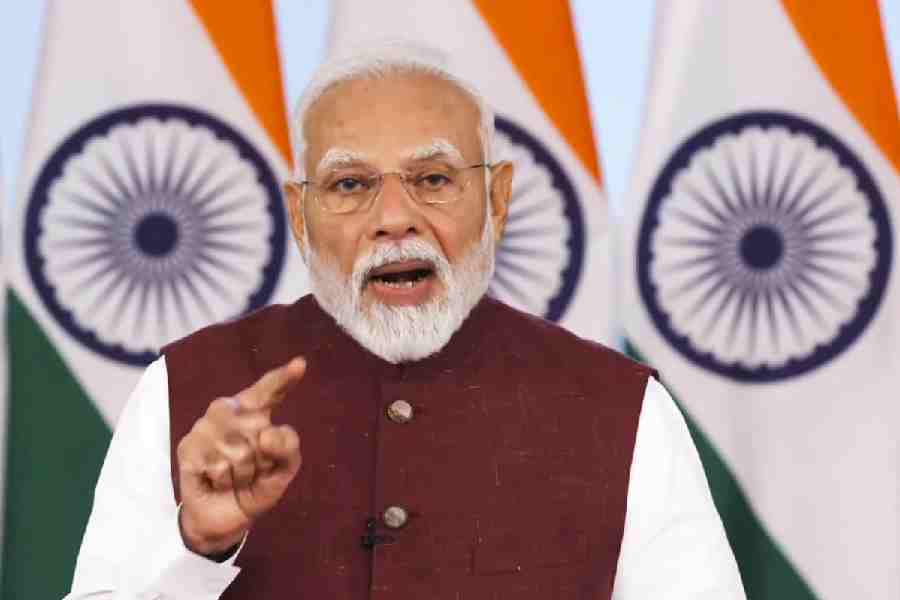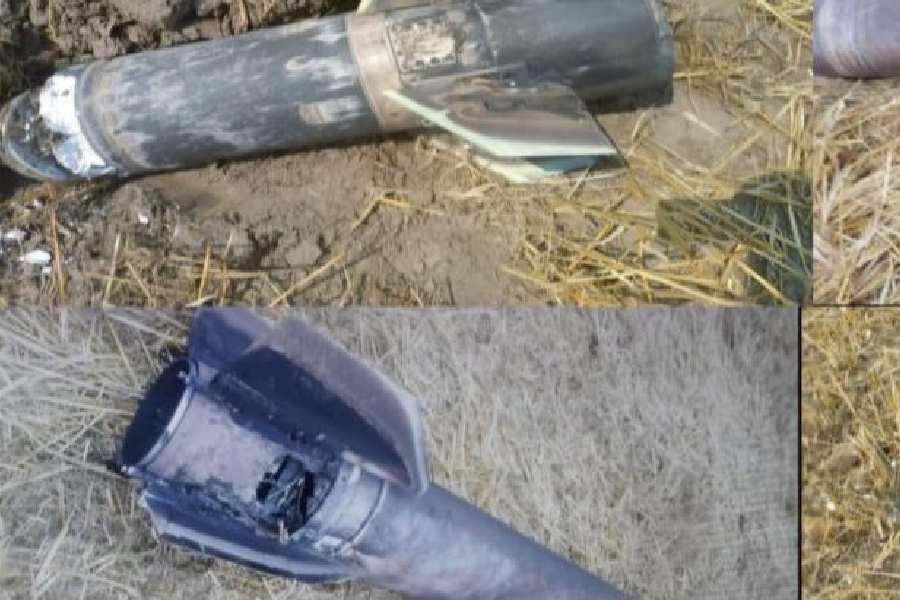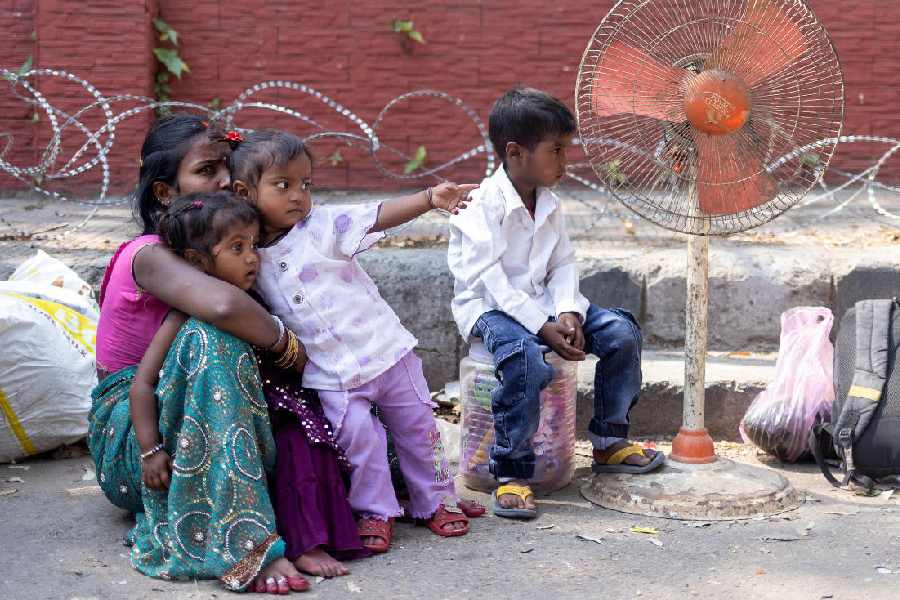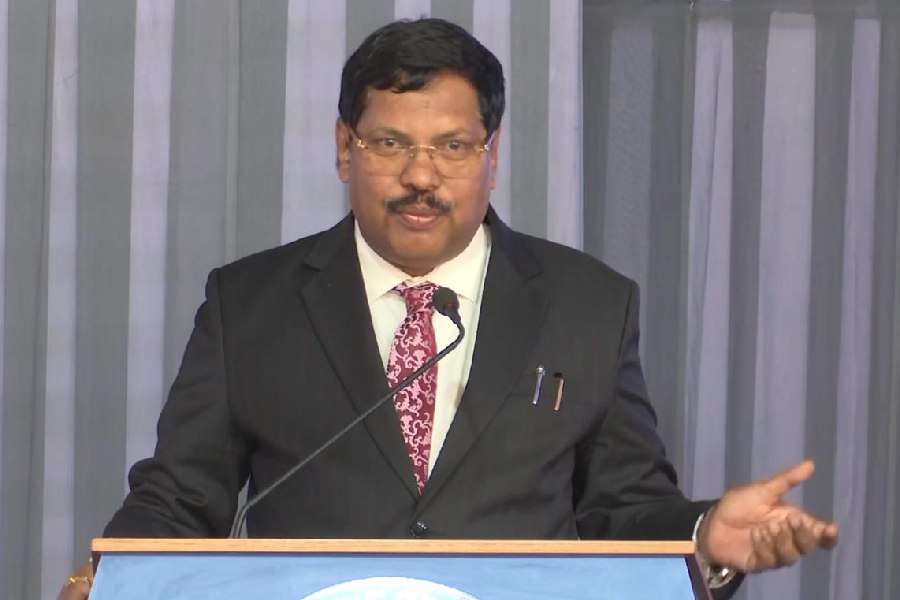 |
| Juhi Chawla speaks against radiation from mobile phone towers at a news conference in Mumbai on Wednesday. (PTI) |
Nov. 2: Actress Juhi Chawla and residents of four buildings in plush Malabar Hill in south Mumbai have approached the government to regulate mobile communication towers after 14 towers were installed in the state guest house in their neighbourhood.
The residents, calling themselves Neighbours of Sahyadri Guest House, have put up hoardings outside their buildings around the guest house, requesting the state government to remove the cellphone towers amid concerns about electromagnetic radiation from the towers. The guest house hosts prominent state guests visiting the city.
Chawla, who first wrote to the chief minister and MP Milind Deora in 2010, after conducting an independent audit of the radiation level, hopes that the government steps in soon to regulate the high levels, especially in residential areas.
“We had heard of the harmful effects of radiation but wanted to be statistically sure. After conducting an audit through an independent agency in our house, which is just 40 metres away from the towers, we found out that the radiation level in the house was very high,” said Chawla.
The residents are demanding that the standard for radiation through mobile tower boosters should be at 1 milliwatt per square metre. According to experts, the exposure limits to radio frequency fields prescribed by India is 9.2 watts per square metre, in contrast to much lower levels in other countries — 3 in Canada, 2 in Australia, 1.2 in Belgium, 0.1 in China, Italy, 0.095 in Switzerland and 0.02 in Russia.
The demand from Malabar Hill appears to echo a recommendation by a government expert panel that warned last month that regulation of mobile towers has not kept pace with the growth of the cellphone industry and India needs to revise its currently prescribed exposure limits.
According to the panel’s report, Salzburg city in Austria has a precautionary limit of 0.001, which is what the Malabar Hill residents are demanding. New South Wales in Australia has a much lower limit — 0.00001 — the report says.
Chawla said that after the results of her audit, she sent the findings to the chief minister and also wrote letters to the neighbourhood to request them to conduct such audits and create awareness.
“We will not see the immediate effects of radiation but it would have long-term hazards. In a densely populated country like ours, there has to be regulation on clusters of towers installed on buildings in residential areas or near hospitals and schools,” she said.
Chawla said she had been supported by Deora, who said he would take steps towards regulation, but nothing substantial has happened. “Other departments too have washed their hands of it,” she said.
The panel of experts tasked by the Union environment ministry to assess the likely impact of mobile phone towers recommended in a report last month that India’s guidelines on exposure limits need to be revised as they are based on standards set by an international commission that looked at only the thermal impacts of radio frequency and “are dismissive of current evidence on impacts of non-thermal nature from chronic exposure to mobile towers”.
“Studies have indicated significant non-thermal long-term impacts of electromagnetic fields on some species, especially at the genetic level which can lead to various health complications including tumours, reduction in sperm counts and congenital deformities,” the panel said.
However, the panel said there is no long-term data on the environmental impacts of exposure to mobile towers. Studies on the impact of cellphone towers on birds and other wildlife are almost non-existent in India, it said, calling for further research to guide policy.
The Malabar Hill residents are also planning on using RTI to get the government into action.
Prakash Munshi, a resident, approached the public works department which responded through a letter on November 1, giving details of the mobile tower companies which have installed small boosters on the guest house.
“They have said that they would be responding after getting information from other departments of the state,” said Munshi.
“We should be taking proactive than reactive steps. After taking up the cause, apart from approaching the government, we can only create awareness so that others would demand action and take necessary steps,” said Chawla.
A PTI report said minister of state for Environment Sachin Ahir said radiation from mobile towers is not hazardous to health. 'The issue had figured in the legislative assembly as well and a expert committee was set up to look into the complaints. As per the report, radiation from mobile towers do not cause health problems,” he said.
Besides removal of towers, Juhi demanded clarity in specifications like height and number of towers in a given cluster, besides their distance from residential buildings and schools across the state.
“The condition of local residents living nearby the mobile towers was like staying in a microwave oven,” the actress said, adding standards of radiation should be reconsidered in the densely-populated areas.









